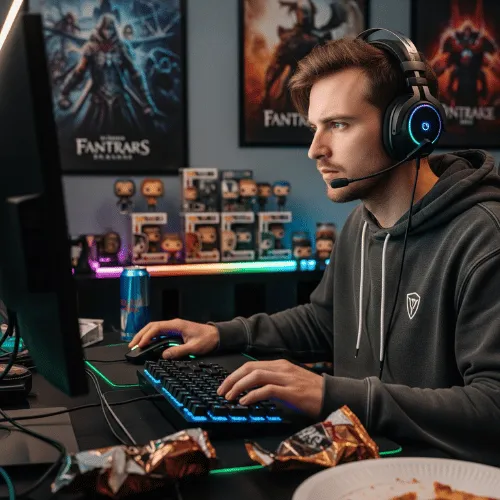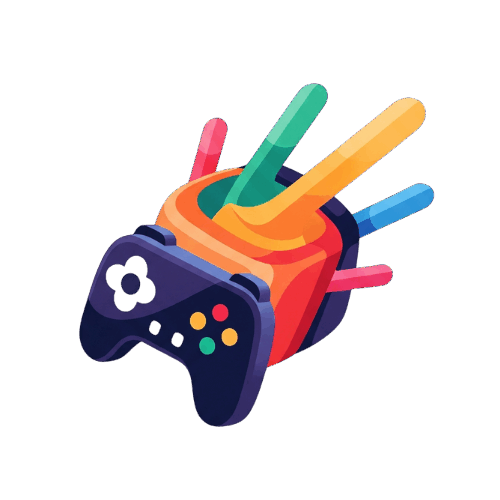As someone who has built six home arcade rigs, tested way too many emulators, and spent a decade curating ROM sets like a gremlin with a label maker, here’s my take up front. If you want a fast, flexible setup for retro arcade games, emulation front-ends, and even cloud gaming, a plexile arcade (yeah, that term) is the move. I use it to mix retro arcade vibes, console emulation, and modern streaming without the drama.
What Is a Plexile Arcade?
A Plexile Arcade is a modular home arcade setup that blends emulators, MAME, and cloud gaming into one simple, library-style front-end. It boots quickly, keeps games organized with artwork, and delivers a retro arcade feel without bulky cabinets or complex menus.

It’s a modular home arcade setup that feels like a neat media library and plays like a real cabinet. It’s simple to use. Strong on flexibility. Light on fuss. Perfect if you love retro gaming, MAME, front-end launchers, and “I just want to hit Start and play.”
In my experience, the smartest way to judge any setup is by time saved and games actually played, not specs you’ll brag about twice. I keep a running list of game reviews that respect time and money for that reason. Cuts through the nonsense. Helps me pick what stays on the machine.
What I actually mean by Plexile Arcade?
I’m talking about a streamlined, living-room-friendly arcade rig that boots into a clean menu, launches ROMs or PC games, and can also stream. Think of it as a mash-up between a tidy media center and a no-nonsense arcade launcher. If you’ve ever used Plex for movies, imagine that vibe, but for games. Pretty covers. Fast start. No 47 submenus before you reach Street Fighter II.

Why people like me obsess over it
- Fast boot. I’m playing in seconds, not minutes.
- One controller setup. No hunting for drivers every weekend.
- Scales from a Raspberry Pi to a mini PC to a full arcade cabinet.
- Clean library with box art, themes, and sane categories.
- Works with emulators, PC launchers, and cloud streaming if you want.
I keep tabs on gaming news to track emulator updates, front-end themes, shader packs, and new handhelds. Because yes, one shader update can make your CRT-style scanlines go from “eh” to “chef’s kiss.”
How I build one without losing a weekend
The simple plan
- Hardware: mini PC or small desktop. Pi works, but a used i5 box is way snappier.
- Front-end: a clean game launcher that’s easy to theme.
- Emulators: MAME for arcade, plus cores for NES, SNES, Genesis, PS1, etc.
- Storage: SSD. Always SSD. Games load faster, less heat, fewer swears.
- Controls: two USB fightsticks, or a pair of Bluetooth pads. 8BitDo usually just works.
- Extras: shaders for CRT glow, bezels for that arcade frame feel.
My go-to hardware tiers
| Build Tier | Example Hardware | What It Runs Well | What It Struggles With |
|---|---|---|---|
| Starter | Used mini PC (i5-6500), 8GB RAM, SATA SSD | Arcade (MAME 2003), NES–PS1, lightweight shaders | Demanding Naomi/Model 2/PS2, fancy 4K themes |
| Sweet Spot | Ryzen 5 mini PC, 16GB RAM, NVMe SSD | Most arcade boards, PS2/GameCube, nicer shaders | High-end PS3/Switch emulation |
| Overkill | Desktop with mid GPU (e.g., GTX 1660), 16–32GB RAM | Arcade + PS2/GC/Dreamcast with heavy shaders, Dolphin widescreen hacks | Still won’t fix bad ROM dumps or poorly maintained cores |
For curating the actual games list (the stuff you’ll show off), I like browsing top games feature sites that highlight gems by genre. It keeps my library focused on fun, not just “complete sets” I’ll never touch.
Does it feel like a real arcade?
Short answer: yes, if you set it up right. Use a solid fightstick, keep input lag under 10ms, add CRT-style shaders, and map your buttons like a sane person. If what you want is the full cabinet vibe, that’s doable too. The secret sauce is less about the wood and more about input, timing, and presentation. This is still a love letter to the classic arcade game rhythm—fast retries, quick wins, tougher-than-you-think bosses.

Control nerd stuff (but in plain words)
Input lag kills fun. I test on a low-latency 1080p monitor. I turn off fancy TV processing. I keep Bluetooth to a minimum, or use a good dongle. Wired is better for boss fights. And yes, your beautiful living room TV might be sabotaging your parries.
- Turn on “Game Mode” on the TV. Or use a monitor.
- Keep emulator frame delay modest. Don’t chase 0ms and break audio.
- Stick to known-good controllers. 8BitDo, Hori, Mayflash adapters.
- Test one game you know by feel (for me, it’s Metal Slug X). If the jump feels mushy, tweak.
I also keep a folder of quick start notes and a tiny library of must-play classics. If you want to map your own rotations, this list of gaming article hubs is handy for discovering curated lists by theme—beat ’em ups week, shmups month, whatever keeps you playing.
Common mistakes I keep seeing
- Too many games. 10,000 ROMs means 9,990 you’ll never open.
- Weird button maps. Make a sane default and stick to it across systems.
- Bad art scraping. Spend 30 minutes getting good box art. It matters.
- Ignoring heat and dust. Tiny PCs still need airflow; cabinets trap heat like ovens.
- Over-theming the front-end. Pretty, yes. Slow, no. Keep it snappy.
If you want to go deeper on curation and what’s worth the time, the game reviews category I follow is great for finding short, honest picks.
My rules for a happy game library
- Limit each system to a “Top 25.” Keeps it fresh.
- Use playlists: local co-op, party games, one-credit clears, boss rushes.
- Keep a “5-Minute Test” folder for new stuff. Promote the winners.
- Rotate monthly themes. This month: Saturn fighters. Next month: Neo Geo sports chaos.
- Back up configs and artwork. You’ll thank yourself when a drive dies at 2 a.m.
About the name I keep dropping
When I say plexile arcade, I mean a flexible, library-first approach with a clean front-end and low-friction play. Not a brand. Not a product. It’s just how I’ve tuned my setup so friends and kids can walk up, see the cover art, and start a game without me giving a lecture on ROM sets and BIOS files.

Cloud streaming vs local emulation
I use both. Local for responsiveness and old-school joy. Streaming when I’m lazy, or I want to keep things on the couch with modern games. If you’re into cloud tech, read up on the basics of how cloud gaming works. It’s good, until your Wi‑Fi decides to cosplay as dial-up.
Quick comparison
| Thing | Local Emulation | Streaming |
|---|---|---|
| Lag | Low (if tuned) | Depends on network |
| Setup Time | Higher at first | Low |
| Looks | Perfect with shaders/bezels | Compression artifacts sometimes |
| Offline | Yes | Nope |
If you want a curated overview site to keep your reading tight and actionable, I like this round-up of gaming article hubs. Grab a few, bookmark, rotate. Easy.
Mini how-tos I wish someone told me sooner
Make the front-end feel instant
- Use simple themes. Pretty, but light.
- Precache artwork. Stops stutter.
- Disable animations you’ll never notice.
Keep kids mode sane
- Create a “Favorites” list with 20 obvious picks.
- Lock advanced settings. No one needs shader menus mid-party.
- Use big fonts and high-contrast themes.
Don’t chase perfection
- Good button maps beat perfect ones you forget.
- One CRT shader you like is better than trying all 400.
- If a game fights you, swap it out. There are a thousand others.

When I’m stuck picking the next few games to add, I scan a couple of game reviews lists and grab two classics, one weird indie, and one party game. That mix keeps the cabinet alive. I avoid giant “complete sets.” Too much noise.
Real talk on legality (the short, sane version)
I’m not your lawyer. My rule: I dump what I own, I read the emulator docs, and I don’t share ROMs. Front-ends themselves are fine. Emulators are fine. The gray area is content. Be an adult. Keep it clean.
Fast answers for the practical crowd
- Best cheap start: used mini PC + SSD + two USB pads.
- Best couch mode: front-end + wireless controllers + TV in Game Mode.
- Best “arcade feel”: fightsticks, CRT-style shader, coin sounds on start.
- Best library trick: keep 200 games max, rotate monthly.
- Best sanity saver: one config profile per system, backed up.
I’ve always found that the charm here isn’t the hardware flex. It’s the moment your friend hits Start, the music pops, and the game just feels right. That’s the point of this whole plexile arcade idea for me. Less friction, more quarters-on-the-marquee energy. Anyway, I’ll tweak my shader again tonight. Because I can’t help myself.
FAQs
What’s the fastest way to build this without breaking stuff?
Grab a used mini PC, a simple front-end, and start with one system (like SNES). Get it perfect, then add the next.
Do I need a fightstick, or can I use a normal controller?
A regular pad is fine. Fightsticks feel better for arcade fighters and beat ’em ups, but not required.
Why do my games feel laggy on my TV?
Turn on Game Mode, avoid extra image processing, and try a wired controller. Big TVs add delay.
How many games should I keep installed?
Under 500 total. Under 200 is even better. Make playlists so you actually play them.
Is cloud streaming good enough for retro stuff?
It works, but local emulation feels tighter. I use streaming for modern games and lazy nights.

I’m Darius Lukas. On my blog, I break down what makes games tick with honest reviews, deep analyses, and guides to help you conquer your next virtual challenge.



